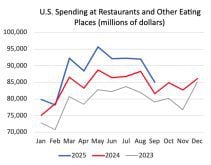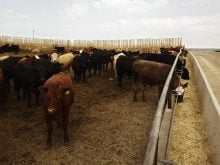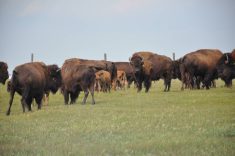The Canadian beef grading system is a good fit with Japanese specifications for bright red meat and white fat.
The Japanese have a detailed quality grading system assessing fat, marbling, meat texture and carcass maturity, said Mark Klassen, technical services director for the Canada Beef Export Federation.
Japanese graders assess 12 visual attributes for marbling, which is the levels of fat traces within the meat fibres, as well as a colour system for assessing bright, red meat.
“Marbling is certainly important in determining the quality grade,” he said.
Read Also

Solar, sheep provide valuable farm diversification
Eric Steeves says raising sheep on forages grown under solar panels provided economic stability and perhaps even saved his family’s fifth generation southern Alberta grain farm.
For Japan consumers, the more marbling the better. It is difficult for producers in Canada or the United States to achieve high levels of marbling because of cattle genetics and the length of feeding time required to lay on more fat.
Slower growth affects marbling levels and with Japan wanting only beef derived from animals younger than 21 months, this is harder to achieve, said Klassen.
It can also be difficult for North America to compare with Japanese marbling requirements because graders from the three countries look at a different site on the carcass to evaluate fat.
On the colour side, the Japanese system measures the degree of redness from a low level of one to the highest colour of seven. Canadian beef ranks at five.
To improve colour, Canada adds vitamin E supplements to finishing diets. It is an antioxidant and slows meat discolouration. Vitamin E is not used consistently across the U.S. herd.
The U.S. and Canada have different levels of defect tolerance.
Under the Canadian system, any meat grading A or better must be bright red, while the U.S. will allow dark cutters because graders say it does not affect eating quality.
In Canada, all A grades must come from youthful animals. Graders look at how much cartilage has turned to bone in the vertebrate to determine maturity.
Canada does not permit yellow fat in any of the A grades while the U.S. will allow yellowish fat.
Texture and firmness are separate assessments in Japan.















